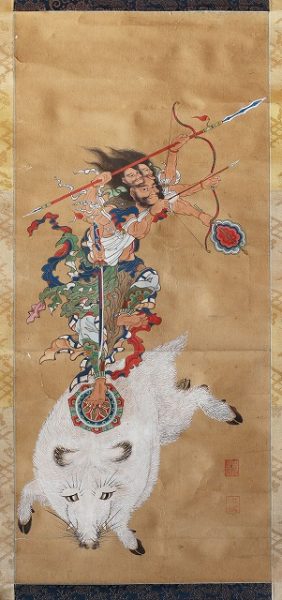
the goddess Marishiten riding a boar
— Hau’oli Makahiki Hou
— Happy New Year
— 明けましておめでとうございます
…and much Aloha!
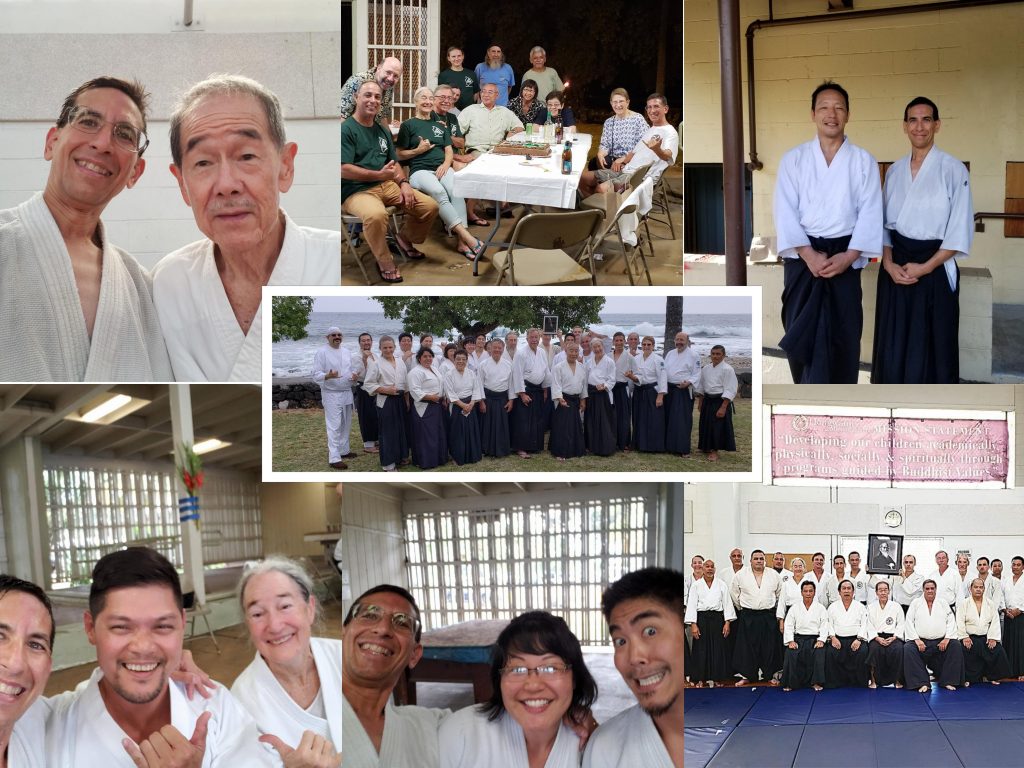
Thank you all for your help and support over the last year. We enjoyed training with all of you in 2018, and we’re looking forward to even more great training with you all in the coming year!
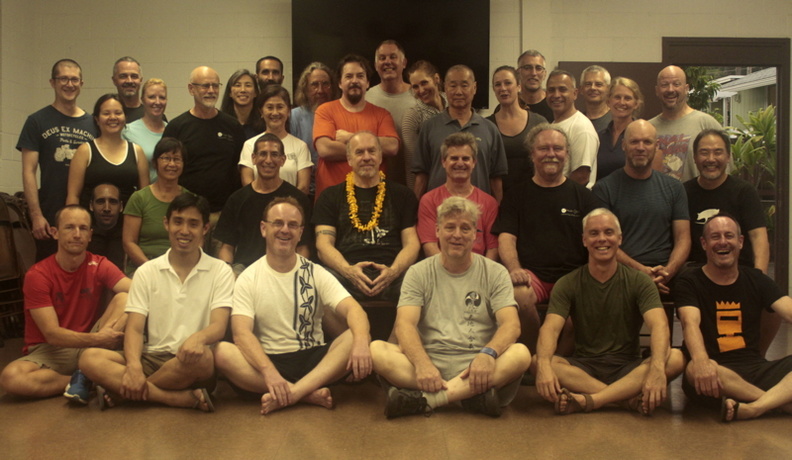
In 2018 our Sangenkai intensive workshop attracted attendees from Japan, Korea, Malaysia, Singapore, Sweden, the mainland USA, Sweden and our local and neighbor island Sangenkai members as well as a large group of New Zealand and Australia Sangenkai members, continuing our tradition as the only Aikido group in Hawaii to hold workshops that command a regular international attendance.
At the top of this page is the goddess Marishiten (摩利支天) pictured as a wrathful demon riding a boar (for 2019 🙂 ) . Marishiten is an esoteric Buddhist deity closely associated with the warrior tradition in Japan. Esoteric Buddhist practices were very popular in many Japanese warrior traditions – and for Sokaku Takeda and Morihei Ueshiba as well.
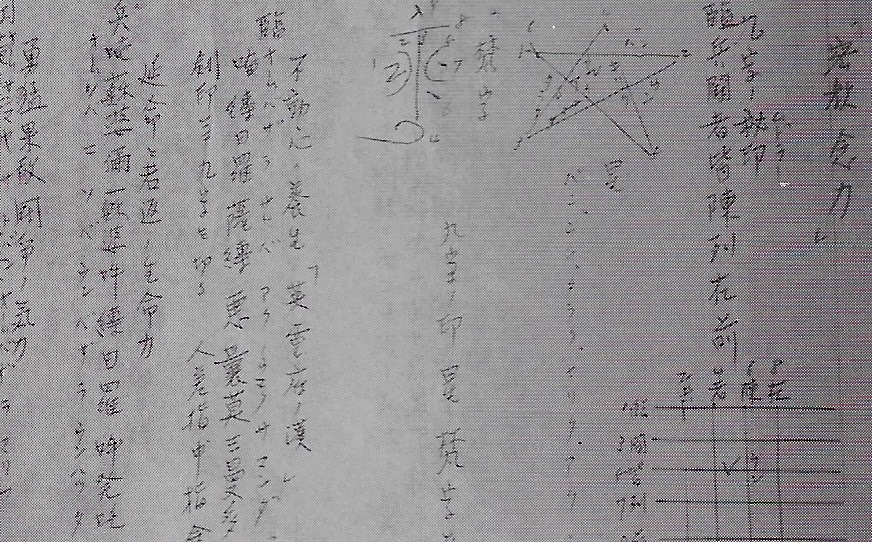
on his father Sokaku’s teachings on the Kuji-kiri and
esoteric Buddhist disciplines
“If you don’t research the Kuji Kiri you won’t understand Aikido.”
– Aikido Shihan Sadateru Arikawa
Esoteric Buddhist references abound in Tokimune Takeda’s notes of his father Sokaku’s instruction – and no less in Morihei Ueshiba’s lectures, but before we go too far, I should mention that this is not about religion, strictly speaking, but about martial training – about a system of visualization and imagery that goes back through China to India and has deep roots in Asian martial systems because…it works, and works rather well. It works so well that modern athletes and Olympic champions now use imagery and visualization in their day-to-day training.
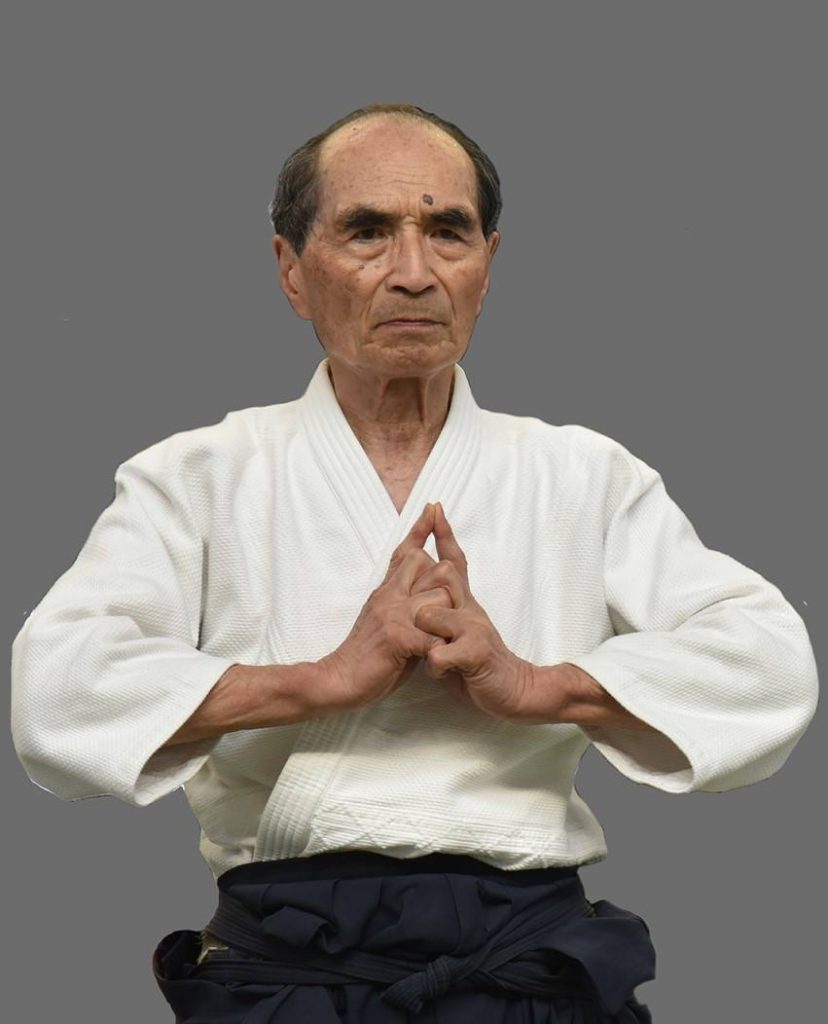
“When one looks at O-Sensei’s Doka and other writings they might think that they are related to Shinto, but they actually contain the teachings of Shingon esoteric Buddhism.”
– Aikido Shihan Hiroshi Tada
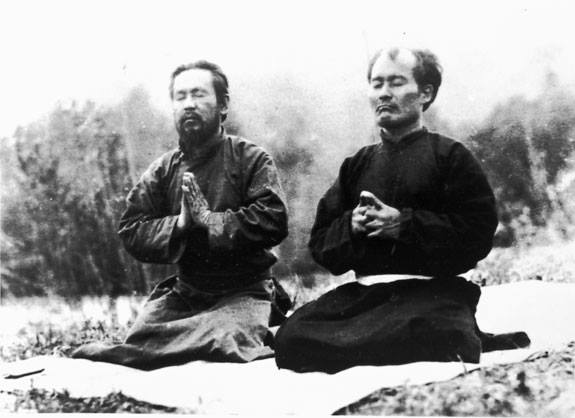
Another esoteric Buddhist deity that figures prominently in the warrior tradition is Fudo Myo-o, the “Immovable Wisdom” that represents an important principle of training in the Asian martial traditions, but is often badly misunderstood. Attached below is an essay by Dan Harden on the subject of Fudo Myo-o (originally posted on e-Budo, but edited for clarity as a stand-alone essay) – I hope that it will prove thought provoking and useful to your training in 2019. Happy New Year!
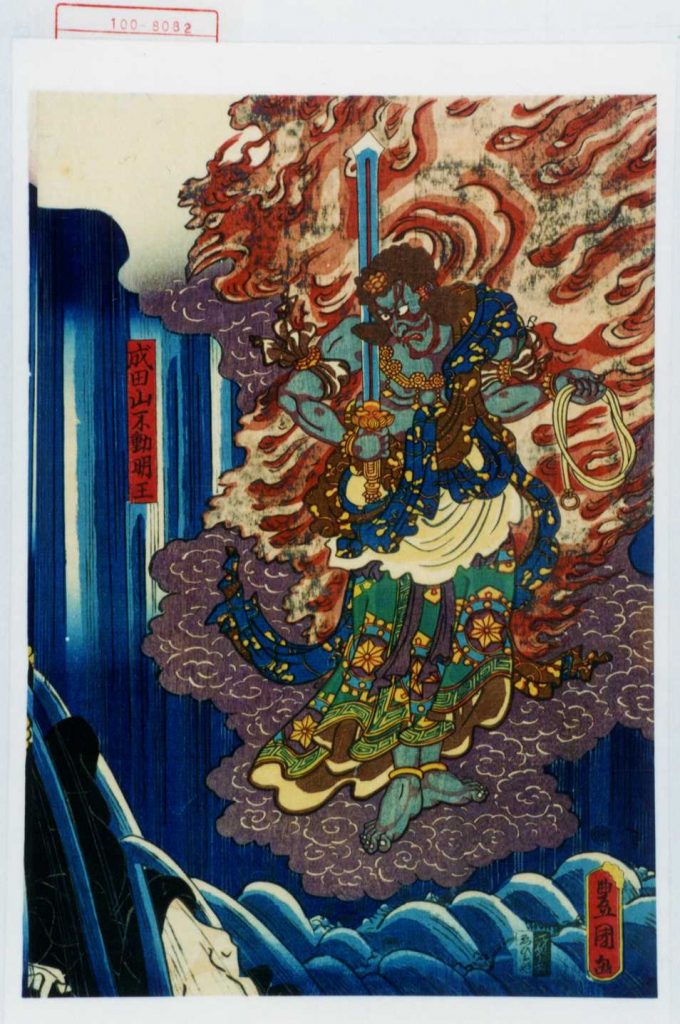
Morihei Ueshiba’s teacher Sokaku Takeda
by Utagawa Kunisada
Fudo myo-o (Acala vidya) is a training paradigm that has lasted for millennia to create truly powerful skills. That it is being reduced to the lowest common denominator by modern martial artists, sport science, military personnel and cops is really no surprise. While we all agree on the mental aspect of training – more so in force-on-force or life threatening situations circumventing or at least dealing with an adrenaline dump aspect of training, to remain both calm and focused – the concept is far deeper than any of that.
It was the connection of the mind to control the body that led to a higher level learning that has existed for millennia. Trying to equate and more so -reduce it to just being a lower level training of mental focus in combatives is just simply wrong.
Okay, then…. mental focus under duress. Got it. Got anything else? Anything at all?
No?
Why?
Most people simply haven’t a clue about anything else. No harm, no foul, But it is what it is. Some have some initial understanding of this type of training, but little actual skill in using it. Which bears out in their inability to demonstrate an enhanced mind/ body cultivation either in their arts or bodies. It’s either very, very hard or rather easy, to defend in person. It is interesting that the training models to produce immovability are still extant though not widely known, none of which I have seen incorporate the unshakable combative mindset idea. That..is different, rather they focus on the mind/body. One example is the hara or dantian: As one internal Chinese martial arts powerhouse who taught in Japan said. “Aiki? Where is yin? Where is Yang? How can there BE…aiki? You cannot pretend daintian, you will be found out!”
While I have seen better movement from a few Japanese teachers, as of yet I have never met a single person in Aikido, Daito ryu or Koryu who HAS a center, much less sophisticated use of one. Thus discussion of moving “from one” becomes a total waste of time. It would take years from initial meetings to have them start to actually create and move FROM one, forget a meaningful dialogue.
What remains is that there still exists people who know it and train this material. They are just exceedingly difficult to find and come in various knowledge and skill levels.
What are they training?
The immovable body as a concept.
All of the trade names and acumen for this work have existed for generations and have managed to survive direct translations from culture to culture, with the same terminology and practices used from Tibet to India to China and Japan as well as to specific family Indonesian arts. One would first have to know the terminology, and the practices to understand why the common phrasing is a base line. Once that is done, we can see the uses of common terminology and models from Tibet to internal Chinese martial arts, to Japan; the founder of Shinto ryu and other Koryu to Daito ryu on to Ueshiba’s aikido. Himself using trademark terminology of six directions, the working of attraction point between yin and yang, Aiki being the working of the two ki’s as heaven/earth/man. Ages old material. From B.C.E. to 2019.
Immovability… as a name?
Here we have just another example with Acala Vidya to Fudo Myo-o.
Acala vidya or Fudo Myo-o makes perfect sense – as it is written. “Esoteric training to achieve immovability.”
It makes no sense what-so-ever to call a person, deity or statue….an “esoteric practice!”
Why bring in vidya, as in prana vidya (esoteric training to work ki or chi), or Myo or Mikkyo?
Why?
Why mention a training when you were talking about a deity or person?
Because you were not! You were talking about a training concept and methodology.
The mention of a training, an esoteric one at that, is not an imagined state. Which in itself is nice little escape. What a convenient way to equalize all efforts.
”This is my fudo shin.”
“MY…imagined state.”
“You can’t challenge my imagined state….”
Yet we can challenge an understanding of the real concepts. And why can we? For the simple reason that the thrust of this in the ancient world had teeth. It had a profound physical training model behind it that produced physical, real world results for what feels like immovability and power. Not just being strong willed against adversity.
Another example for imagined versus real results are in simple but well known models;
I do this with yogi’s in mountain pose. They can get knocked over with a finger rather easily. Then, I show them an example of “the esoteric training to achieve immovability” behind it and surprise of surprises in about 5 minutes flat…they feel? Well…sort of like a mountain.
I wonder why they called it…. mountain pose?
I leave them to choose. You can teach:
Lift your heart chakra to the sun yoginis
or
Use it to be stable and feel strong….like a mountain.
It is the same with downward dog and other postures.
I dunno…maybe words have meaning. Maybe some ancient practices actually are defensible and others are just what they are…simply imagined states.
Why Acala vidya? Why esoteric training that produces immovability? Uhm…because it did, and does and was tracked and trained and discussed and actually useful for real people not living in an imagined state. As stated, it simply makes a direct causal link that it was the training to achieve something profound in many warrior cultures that also had health benefits as well as power that gave name to the concept.
Why was it not the norm?
The oft told tale of training in the mountains, training in temples, warrior monks being unusually powerful, has existed for thousands of years. Mind/ body training has been consistently trained solo, many times in isolation and tested and practiced in small groups.
- First and foremost it was for a mental control of the body to do unusual things that were powerful and out of the norm. That training created different outcomes in combatives that in and of themselves, were forces not normal for an opponent to face, or normal to react to.
- As well, the adepts at it generated unusual effects to forces on them. So… OODA loops for the opponent? They went out the window.
This was but a couple of examples of many reasons why the training has lasted for millennia. For those who can actually do it instead of just talk, it truly made a palpable difference on contact. The mind body training has created giants in budo and we in turn, look at the giants and follow them, instead of the training. Hence….the majority continue to suck and the giants remain, well, the giants.
In the dawning of our present age which I call “the age of distraction” higher level, mind/body physical training has proven to just be too much for the instant gratification crowd. Why spend countless hours perfecting a tank like body that is all but impossible to throw and with the ability to hit like truck? Go do techniques. Most modern budo people have dismissed or rewritten history to discount this profound training and reflect their stupefyingly ignorant penchant for banging into each other with fists, legs, bodies, and more so sticks, swords and any things else they can get their hands on.
It hasn’t gone away. It is just starting to come out to the public. Those so inclined are discovering the arts did have secrets all along. It wasn’t B.S. and they do have worth. It is why they have lasted for eons. Hard physical work is required.
NOT flinching from a battlefield environment or being focused in a fight…was not it. Not that there is anything wrong with that. As I asked before:
Okay. On that we agree.
Got anything else?
Anything at all that it could mean?
No?
They did!
– Dan Harden, March 2015
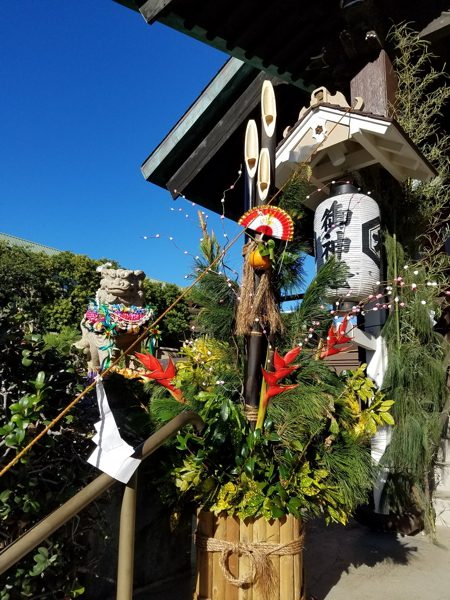
New Year’s Day at the Izumo Taishakyo Mission of Hawaii


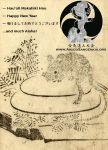


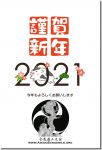
Leave a Reply